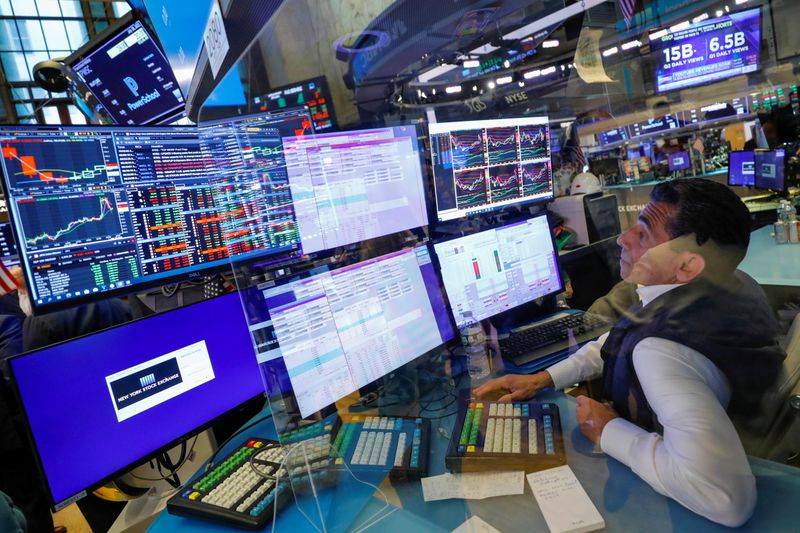Street Calls of the Week
Investing.com -- UBS reaffirmed its year-end target of 910 for the MSCI AC World index, implying a 9% upside from current levels. The bank sees multiple factors supporting global equities, despite ongoing market volatility.
Tactical indicators remain modestly positive, UBS notes, with the bank’s Risk Appetite Indicator aligning with an ISM new orders reading of 47, which is typically consistent with 1-1.5% GDP growth.
The bull-bear ratio for individual investors is two standard deviations below its norm, a level that has historically resulted in a market rise of about 5% over the following three months.
Additionally, UBS strategist Sean Simonds’ model assigns a 69% probability to a 5% gain in the S&P 500 over the next month.
The bank also highlights the equity risk premium (ERP) as a supportive factor. UBS estimates the U.S. ERP at 4.8%, assuming generative AI boosts productivity by 1% from 2028.
“The more we read about Gen AI, the more we think it will boost productivity,” strategists led by Andrew Garthwaite said in a note. Even if bond yields rise back to 4.5%, UBS sees around 13% upside for the S&P 500.
“Without Gen AI boosting productivity, the potential downside is only modest. Non-US P/E on normalized earnings is close to average levels,” they added.
On the macroeconomic front, UBS does not foresee conditions for a bear market, as recessions have typically been necessary triggers. “Corrections turn into bear markets 25% of the time,” the bank says, adding that bear markets in the past 55 years have generally required an economic contraction. UBS does not see recession risks materializing in the near term.
Meanwhile, earnings revisions have stabilized, supported by improvements in the eurozone and emerging markets. UBS forecasts 5% EPS growth for the MSCI AC World in 2025, with 3% expected for the Eurostoxx and 16% for emerging markets.
At the same time, the investment bank highlights potential risks, particularly from U.S. trade policy. UBS assumes an aggressive tariff scenario is unlikely but identifies it as a key near-term threat.
Regarding European equities, UBS remains overweight on the market, estimating a 6% upside for the Stoxx 600 by year-end.
Since the latest U.S. market peak, European cyclicals have outperformed defensives by 9%, while China’s equity market has gained 4.5%, reinforcing the view that concerns are currently U.S.-centric rather than global.
